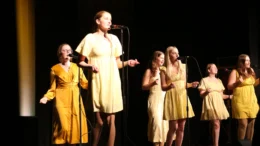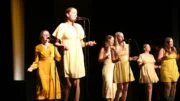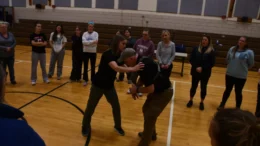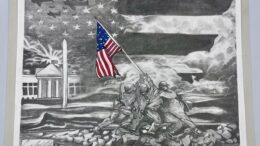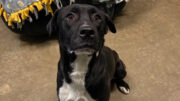A search to name the type of frost formation found on the neighbor’s pond only turned up more confusion. It would seem as if everyone on the internet has their own names for these frigid and fragile creations.
The search first turned up the various types of frost.
According to a post on the National Geographic’s online encyclopedia, the types that are the most common are radiation frost – also called hoarfrost, advection frost, window frost and rime.
The post can be found at www.nationalgeographic.org. The article defines hoarfrost as “frost in the form of tiny ice crystals that usually shows up on the ground or exposed objects outside.”
It said that advection frost is a collection of small ice spikes that form when a cold wind blows over tree branches and other services.
The definition for window frost was pretty much self explanatory. The article also added that “window frost was much more common before people began using double-paned windows.”
It defined rime as frost “that forms quickly, usually in very cold, wet climates.”
While the National Geographic article said hoarfrost was frost in the form of tiny ice crystals, the website snowcrystals.com posted some photos that showed giant hoarfrost crystals. Some were almost as wide as a cross-country ski.
The website’s “Guide to Frost” said that when “frost forms as minute ice crystals covering the ground, we just call it all frost. But sometimes the frost grains grow larger and are called hoarfrost crystals.”
“Good hoarfrost is not that uncommon if you watch for it. Hoarfrost grows whenever it’s cold outside and there is a ample source of water vapor nearby,” the article said.
The post went on to add a type of hoarfrost called surface hoar, which it said “typically forms when a snowbank warms up during the day and is then cooled again overnight.” That action causes evaporated water to recrystallize and form ice crystals on the snow’s surface.
Snowcrystals.com’s definition of a “frost flower” or “feather frost” were formations that looked like a small puff-ball of cotton candy, a few inches across, made up of clusters of thin, curved ice filaments. It went on to say that the formations are rare and “it appears that the ice filaments are essentially pushed out from pores in the wood as they freeze.”
However, a post on the Wiley Online Library’s site, defined frost flowers as “clusters of ice crystals found on freshly formed sea ice and occasionally on frozen lakes.”
The photos accompanying it looked like the feather-like crystals that the “Guide to Frost” said were hoarfrost crystals.
The information was taken from research letters authored by Robert Style and M. Grae Worster.
The post on the Wiley Online Library’s site said that the “frost flowers” were formed “by condensation from a supersaturated atmosphere or from water wicked up through porous sea ice.”
The researchers were studying mostly sea ice, but also said that the “flowers” could grow on ponds as well.
“Though more rarely seen on the surface of frozen freshwater ponds, frost flowers can form there if the atmospheric temperature falls sufficiently rapidly (below about -15°C) before the ice has grown very thick.”
This explanation appears to come closest to what formations have been photographed locally on the neighbor’s pond.
However, internet searches of frost formations using the terms “hoarfrost, flowers or rime” show photos as diverse as the different explanations.
Whatever the icy designs are called, they still make beautiful photos.
January thaw?
Meanwhile, it doesn’t look like there will be much frost formations for the rest of this week.
According to the National Weather Service’s Pittsburgh office, a January thaw will take place midweek this week with highs soaring into the 50s and 60s melting any left over snow.
However, it seems that the thaw may be short-lived as the office said that “low pressure will bring widespread precipitation Saturday with a return to below normal temperatures.”
The office said that last week’s freezing temperatures were the coldest air since Feb. 19, 2015.
A Facebook post from the Pittsburgh office on Sunday touted the “winner of the coldest spot in the area.” The dubious distinction fell to Jackson Center in Mercer County where it was -18 degrees Sunday morning.
Earlier this week, the office may have provided a ray of hope for snow-buried Erie. It provided images of the ice coverage on the Great Lakes and reported that the recent cold spell had increased the coverage. It reported that Lake Erie had nearly 60 percent coverage. The service said that hopefully that meant a little less lake-enhanced snow.
However, it is hard to say what the forecast warm up will do to the ice coverage.
Crazy critters
Subzero temperatures didn’t dampen the spirits of the three crazy canines. The St. Bernard and Newfoundland have especially be enjoying the snow and cold.
A Walk in the Woods contains photos from newsroom staffer Anna Applegate’s daily jaunts around her neck of the woods. Tagging along on the treks are dogs, Buford, Sherman and Sadie, and goats, Kyle and Kennedy. Applegate manages the Good Times and can be emailed at bigdogs.thederrick@gmail.com
















